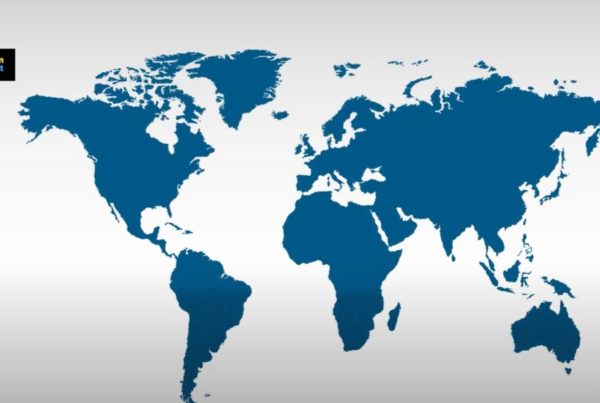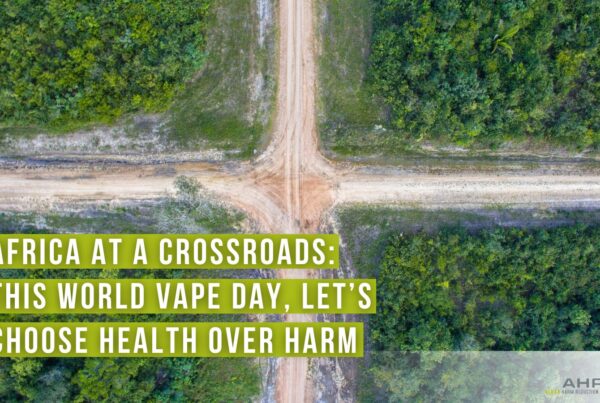There is a poverty of knowledge, and a poverty of risk communication about THR products. Consumers are paying the price.
On 15 March 1962, Former US President John F. Kennedy delivered a landmark address to the US Congress outlining his vision of a consumer rights movement. This vision catalysed the formation of Consumers International, the world confederation for consumer rights groups, which brings together over 200 member organisations in more than 100 countries. Collectively, they defined eight basic consumer rights, which have been incorporated into the internationally accepted UN Guidelines for Consumer Protection (full list of rights HERE).
Of these eight basic consumer rights, at least four are not being respected by the anti-THR lobby (read below for further elaboration of each point):
- The right to safety: To be protected against products, production processes, and services that are hazardous to health or life.
- The right to be informed: To be given the facts needed to make an informed choice, and to be protected against dishonest or misleading advertising and labelling.
- The right to choose: To be able to select from a range of products and services, offered at competitive prices with an assurance of satisfactory quality.
- The right to be heard: To have consumer interests represented in the making and execution of government policy, and in the development of products and services.
- The right to safety
Combustible tobacco products produce 7000 toxicants when smoked, 70 of which are known to be carcinogenic. Smoking causes more than 8 million deaths annually, and 80% of smokers live in LMICs. Clearly, these products are hazardous to consumers, and are exacerbating health inequalities. The prohibitionist’s instinctive response to this problem is to ban tobacco sales completely. This strategy was employed by the South African government during the second wave of the Covid pandemic, when they banned alcohol and tobacco sales in an effort to reduce hospital admissions.
The ban was laced with unintended detrimental consequences. Notably, there was almost no significant reduction in smoking; according to one study, 93% of smokers continued to smoke throughout the 20-week ban by obtaining products from illicit sources. According to Professor Corné van Walbeek, a Cape Town-based expert on the economics of tobacco control, the ban “became a farce. Everybody knew that people were buying illicitly”. Moreover, the problem of lost tax revenue due to illicit trade became significantly worse: “the latest National Treasury forecasts indicated that it expects to collect taxes on 700 million cigarette packs this fiscal year, down by nearly a fifth in two years”.
Illicit trade flourishes during prohibition; this phenomenon holds true for THR products, as with any other. For example, bans on flavoured vaping products create an incentive for the black market to start supplying them. This renders consumers vulnerable to unregulated, illegal products that are not quality-controlled. The consequence of this reared its ugly head during the so-called ‘EVALI’ outbreak in 2019, which resulted in nearly 3000 cases of severe lung injury or death. All of these cases were directly attributable to illicitly traded, altered THC vaping liquids that contained vitamin E acetate. There is no evidence of any human developing EVALI from bona fide nicotine vaping products, as attested to by 75 public health experts.
As Dr Kgosi Letlape recently said at the Africa Tobacco Harm Reduction Forum, when you ban THR products, you are “abdicating the responsibility to govern, and endangering society”. By banning them, not only are you illogically restricting access to less harmful products, but you are actually also protecting the cigarette market, thereby depriving consumers of their right to safety.
- The right to be informed
When it comes to THR, misinformation is rife, and continues to be spread with vehemence. Consequently, consumers are deprived of their basic right to be informed that safer alternatives to combustible tobacco exist. Take, for example, the oft-cited term ‘EVALI’, which stands for ‘E-cigarette or Vaping use-Associated Lung Injury’. Even though this terrible lung injury has nothing to do with legal, regulated nicotine vaping products, we often hear ‘EVALI’ as one of physicians’ main objections to accepting the evidence underpinning e-cigarettes’ proven potential to help smokers quit cigarettes. With misinformation so prevalent amongst health professionals, consumers will continue to be misled by grossly inaccurate overestimates of the dangers of e-cigarettes.
The cost of this misinformation is significant; only 11.2% of respondents to the National Cancer Institute’s 2020 HINTS survey said that e-cigarettes are safer than combustible cigarettes – a fact acknowledged by the Centers for Disease Control and Prevention (CDC). Despite advice from 75 public health experts to rename the misnomer of EVALI more accurately to Adulterated THC Vaping Associated Lung Injury (ATHCVALI), CDC have refused. One of the experts, Michael Pesko (health economist), said to reporter Marc Gunther: “The CDC’s miscommunication is actually killing people.”
Here in Africa, anti-THR lobby groups such as the Kenya Tobacco Control Alliance (KTCA) regularly produce misleading infographics that are based on ideology rather than science. Most recently, in an effort to smear the work of the Africa Tobacco Harm Reduction Forum, KTCA produced material claiming: “Don’t believe the lies. There isn’t sufficient evidence to show oral nicotine pouches are safe”. This is demonstrably false, as detailed in the Oral Nicotine Commission’s 2020 report, which synthesises compelling evidence that: i) smoke-free, tobacco-free oral nicotine pouches are at least 95% less harmful than cigarettes; ii) countries that have adopted oral nicotine products have seen a dramatic drop in smoking rates.
The continuum of risk of combustible vs non-combustible nicotine-containing products needs to be communicated with clarity to consumers. Only then will they be able to exercise their right make an informed choice and use nicotine more wisely.
- The right to choose
In countries with excessively burdensome regulatory barriers to THR, consumers pay the price: their range of choice to safer alternatives is limited, and sometimes unaffordable. CASA undertook research recently by interviewing 200 Kenyans. Of these, 4 out of 5 respondents said that THR products should be sold wherever cigarettes are sold. Despite this, resistance to oral nicotine remains significant among Kenyan regulators. Consequently, recently published research from Nairobi’s medical school found that Kenyans are choosing unregulated oral tobacco products with the higher cancer risk, such as chewing tobacco, khat, and gutkha.
Flavour bans represent another oppression on consumers’ right to choose. Proponents of restricting flavours usually justify this prohibitionist approach by citing the risk of youth initiation of vaping. However, there are many flaws to this argument. Firstly, it does not work in practice; when a flavour ban was implemented in San Francisco in 2018, data showed that the odds of underage smoking more than doubled after the ban. Secondly, the vast majority of young people experimenting with vaping are already smokers – in the UK, only 1% of young people who had never smoked were current vapers. Therefore, restricting choice will not only divert more young people back towards cigarettes, but it will also deprive adult consumers (who greatly outnumber underage users) of their right to choose flavoured products in their quest to quit smoking.
This is significant because there is extensive quantitative and qualitative evidence indicating that adults who use flavoured vaping products are more likely to quit cigarettes. In 2020, Friedman and Xu published results from a longitudinal study of over 17,000 participants, over a five-year period, showing that vapers who used flavours were 2.3 times more likely to quit smoking than those who used tobacco-only flavours. As Dr Delon Human remarked in a webinar ‘In Favour of Flavour’: “Flavours used in ENDS are inextricably linked to smoking cessation.”
For consumers to be able to safely exercise their right to choose, a regulatory sweet spot needs to be found in which innovation and variety of products is not obstructed, whilst also protecting consumers with evidence-based product safety standards. Dr Delon Human suggested the following pragmatic solution at ATHRF: “We would like [THR products] to be available everywhere where smokers can buy cigarettes. Doesn’t that make sense to you? Then there’s an option for consumers – that instead of the most dangerous product, that they have the option, the information and the risk communication, of how that THR product differs from the cigarette.”
- The right to be heard
Revisit Consumers International’s definition for this right: to have consumer interests represented in the making and execution of government policy. Now compare that with how the WHO and related institutions have cultivated a group-think bubble. By excluding any pro-harm reduction perspectives from the COP meetings, the FCTC has cherry-picked who can, and cannot, participate in the conversations of regulations on THR products. The isolationist nature of this practice has been on flagrant display when the International Network of Nicotine Consumer Organisations (INNCO) – an independent, non-profit NGO – has been denied observer status at COP7, COP8, and COP9. Charles A. Gardner, INNCO’s Executive Director, remarked on the secretive, opaque, and exclusionary nature of the anti-THR COP9 meeting, in contrast to a more open and transparent COP26: “More than 400 NGOs are represented at COP26. Almost all NGOs represented at COP9 are Bloomberg-funded NGOs. Denying a voice to the very people affected by COP9 decisions is not a good look. It’s a violation of human rights.”
Denying consumers the right to be heard is a preventable cause of human suffering. As two of WHO’s Former Directors, Prof Robert Beaglehole and Prof Ruth Bonita, have said: “WHO’s continuing disregard of the wealth of evidence on the value of these [THR] products is condemning millions of smokers to preventable disease and premature death.”
THR Topics
Popular Posts
Quick Links
Women in THR
Related Posts
 Letter to the World Health Organization (WHO)
Letter to the World Health Organization (WHO)
Letter to the World Health Organization (WHO)
 Public Health implications of vaping in Germany
Public Health implications of vaping in Germany
Public Health implications of vaping in Germany
 Public Health implications of vaping in the United States of America
Public Health implications of vaping in the United States of America








